Related Research Articles

José Victoriano González-Pérez , better known as Juan Gris, was a Spanish painter born in Madrid who lived and worked in France for most of his active period. Closely connected to the innovative artistic genre Cubism, his works are among the movement's most distinctive.

Pablo Ruiz Picasso was a Spanish painter, sculptor, printmaker, ceramicist, and theatre designer who spent most of his adult life in France. One of the most influential artists of the 20th century, he is known for co-founding the Cubist movement, the invention of constructed sculpture, the co-invention of collage, and for the wide variety of styles that he helped develop and explore. Among his most famous works are the proto-Cubist Les Demoiselles d'Avignon (1907) and the anti-war painting Guernica (1937), a dramatic portrayal of the bombing of Guernica by German and Italian air forces during the Spanish Civil War.

The French Riviera, known in French as the Côte d'Azur, is the Mediterranean coastline of the southeast corner of France. There is no official boundary, but it is considered to be the coastal area of the Alpes-Maritimes department, extending from the rock formation Massif de l'Esterel to Menton, at the France–Italy border, although some other sources place the western boundary further east around Toulon or even Saint-Tropez. The coast is entirely within the Alpes-Maritimes, a department within Provence-Alpes-Côte d'Azur region of France. The Principality of Monaco is a semi-enclave within the region, surrounded on three sides by France and fronting the Mediterranean. The French Riviera contains the seaside resorts of Cap-d'Ail, Beaulieu-sur-Mer, Saint-Jean-Cap-Ferrat, Villefranche-sur-Mer, Antibes, Juan-les-Pins, Cannes, and Theoule-sur-Mer.
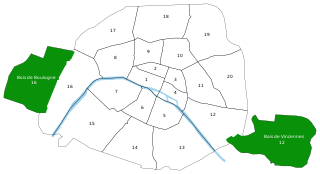
The Rive Gauche is the southern bank of the river Seine in Paris. Here the river flows roughly westward, cutting the city in two parts. When facing downstream, the southern bank is to the left, whereas the northern bank is to the right.

Gerald Clery Murphy and Sara Sherman Wiborg were wealthy, expatriate Americans who moved to the French Riviera in the early 20th century and who, with their generous hospitality and flair for parties, created a vibrant social circle, particularly in the 1920s, that included a great number of artists and writers of the Lost Generation. Gerald had a brief but significant career as a painter.
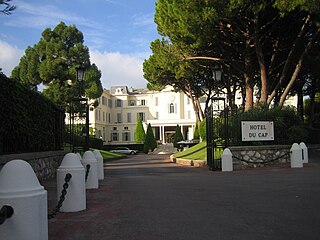
The Hôtel du Cap-Eden-Roc is a resort hotel in Antibes on the French Riviera. Built in 1869 as a private mansion, it opened as a hotel in 1889.

Juan-les-Pins is a town in the commune of Antibes in the Alpes-Maritimes department in Southeastern France. Located on the French Riviera, it is situated between Nice and Cannes, 13 kilometres (8 mi) to the southwest of Nice Côte d'Azur Airport. Juan-les-Pins is a major holiday destination popular with the international jet set, with a casino, nightclubs and beaches. It is served by Juan-les-Pins station on the Marseille–Ventimiglia railway.

Olga Picasso was a ballet dancer in the Ballets Russes, directed by Sergei Diaghilev and based in Paris. There she met and married the artist Pablo Picasso, served as one of his early muses, and was the mother of their son, Paul (Paulo).

Eugenia Huici Arguedas de Errázuriz was a Chilean patron of modernism and a style leader of Paris from 1880 into the 20th century, who paved the way for the modernist minimalist aesthetic that would be taken up in fashion by Coco Chanel. Her circle of friends and protégés included Pablo Picasso, Igor Stravinsky, Jean Cocteau, and the poet Blaise Cendrars. She was of Basque descent.
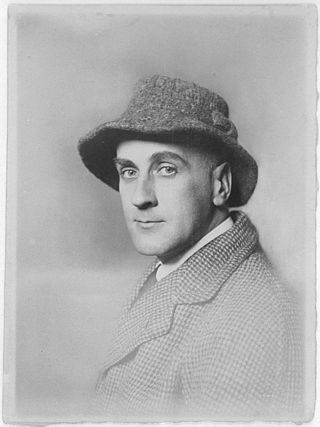
Wilhelm Uhde was a German art collector, dealer, author, and critic, an early collector of modernist painting, and a significant figure in the career of Henri Rousseau.

Jacqueline Picasso or Jacqueline Roque was the muse and second wife of Pablo Picasso. Their marriage lasted 12 years until his death, during which time he created over 400 portraits of her, more than any of Picasso's other lovers.

The Château of Vauvenargues is a fortified bastide in the village of Vauvenargues, situated to the north of Montagne Sainte-Victoire, just outside the town of Aix-en-Provence in the south of France.
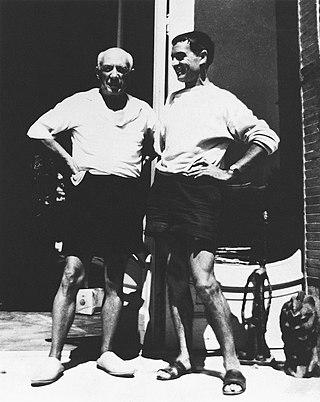
Villa La Californie, originally Villa Fénelon and now called Pavillon de Flore, is a villa at 22 Coste Belle Avenue in Cannes, France. It is located in the quarter of La Californie, from which the villa took its name. The villa was built in 1920 and served as the residence of artist Pablo Picasso from 1955 to 1961.
Picasso: Magic, Sex, & Death (2001) is a three-episode Channel 4 film documentary series on Pablo Picasso (1881–1973) presented by the artist's friend and biographer John Richardson, and directed by Christopher Bruce or British art critic Waldemar Januszczak, who was also the series director. On-screen contributors include Picasso descendants such as Paloma Picasso, Bernard Ruiz-Picasso, Diana Widmaier-Picasso, Maya Picasso, and Claude Picasso; along with authorities such as Mary Ann Caws, Billy Klüver, Gérard Régnier, James Lord, Bernard Minoret, Robert Rosenblum, Linda Gasman, Marilyn McCully, David Gilmore and Gertje Utley; one former mistress ; and one flirtation.
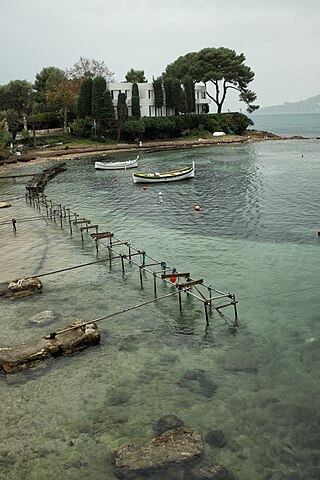
The villa Aujourd’hui is a Modernist villa built by the American architect Barry Dierks (1899-1960) for the Palm Beach, Florida socialite, Mrs. Audrey Chadwick. Located in Antibes and built in 1938, the villa Aujourd’hui is one of the most distinctive of Dierks’ Riviera homes and was one of the last expressions of the Modernist style to have been built on the Riviera prior to the outbreak of World War II.
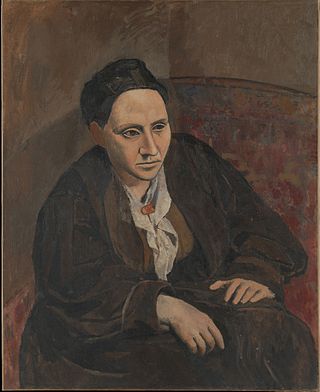
Portrait of Gertrude Stein is an oil-on-canvas painting of the American writer and art collector Gertrude Stein by Pablo Picasso, which was begun in 1905 and finished the following year. The painting is housed in the Metropolitan Museum of Art in New York. It is considered one of the important works of Picasso's Rose Period. The portrait has historical significance, due to the subject's role in Picasso's early life as a struggling artist and eventual commercial success. It also represents a significant transitional step in the artist's move towards Cubism.

Young Girl with a Flower Basket is a 1905 oil on canvas painting by Pablo Picasso from his Rose Period. The painting depicts a Parisian street girl, named "Linda", whose fate is unknown. It was painted at a key phase in Picasso's life, as he made the transition from an impoverished bohemian at the start of 1905 to a successful artist by the end of 1906. The painting is listed as one of the most expensive paintings, after achieving a price of $115 million when it was sold at Christie's on 8 May 2018. It is currently the third highest selling painting by Picasso.

María de la Concepción "Maya" Widmaier-Picasso, later known as Maya Ruiz-Picasso, was the eldest daughter of Spanish painter Pablo Picasso and Marie-Thérèse Walter. She devoted part of her life to the study and preservation of the legacy of her father.
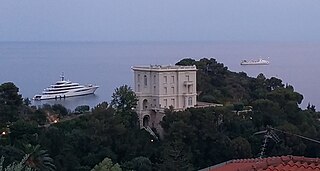
Villa la Vigie is a villa in Roquebrune-Cap-Martin on the Cote d'Azur in southern France. It was built by the British publisher Sir William Ingram, 1st Baronet in 1902 and occupied and renovated by the fashion designer Karl Lagerfeld in the 1980s.
References
- 1 2 3 4 "Villa La Vigie: History". Villa La Vigie. Archived from the original on 10 May 2023. Retrieved 9 May 2023.
- ↑ "Villa La Vigie". Villa La Vigie. Archived from the original on 31 August 2022. Retrieved 9 May 2023.
- 1 2 Kaufman, David (10 August 2022). "Home of the Week: Pablo Picasso Once Used This Spectacular French Villa as a Studio. It Just Listed for $27 Million". Robb Report . Archived from the original on 1 February 2023. Retrieved 9 May 2023.
- 1 2 3 4 5 Base Mérimée : Villa La Vigie , Ministère français de la Culture. (in French)
- 1 2 3 4 5 6 7 8 9 10 11 12 13 14 John, Richardson (2009). A Life of Picasso Volume III: The Triumphant Years, 1917-1932. Thames and Hudson. pp. 265–69. ISBN 9781845951290. OCLC 638867374.
- ↑ Stein, Leo (2008). Pablo Picasso, Gertrude Stein, Correspondence. Seagull. p. 191. ISBN 9781905422913. OCLC 230991387.